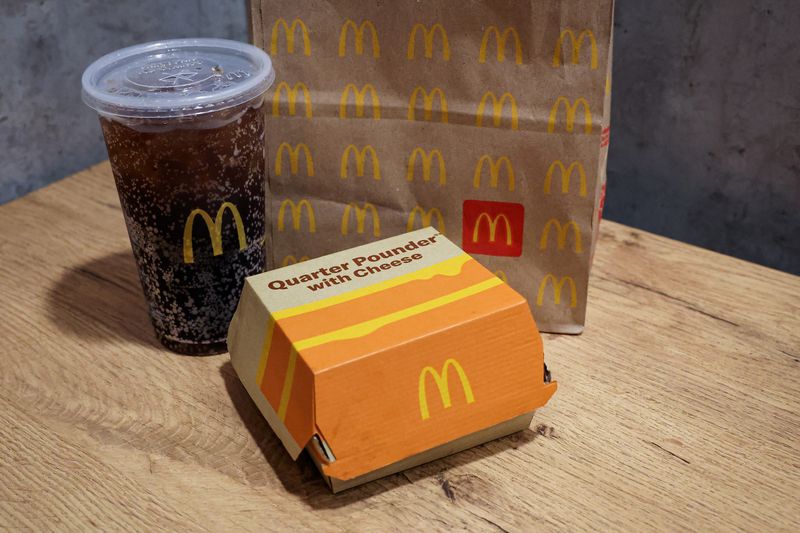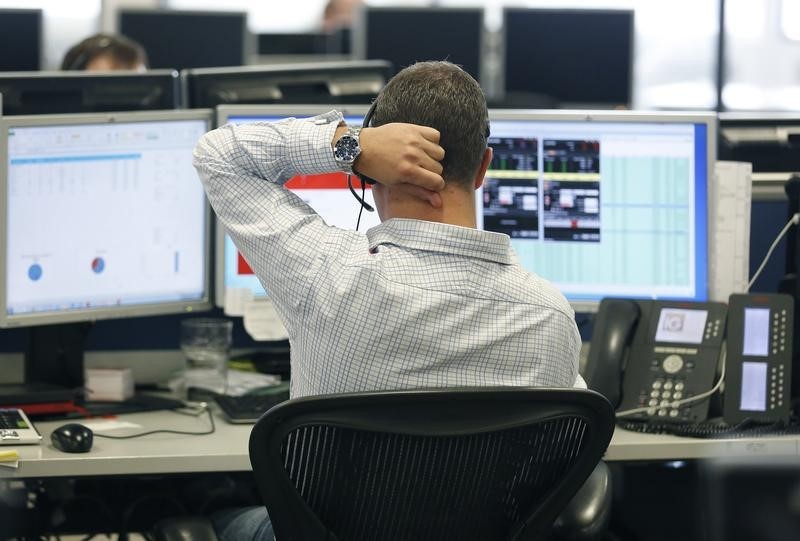By Ananya Mariam Rajesh, Waylon Cunningham
(Reuters) -McDonald’s on Wednesday scrambled to contain damage from an E. coli outbreak linked to Quarter Pounder burgers that killed one person and sickened nearly 50 others when the menu item was pulled from restaurants in a dozen states.
According to the US Centers for Disease Control and Prevention (CDC), which is investigating the outbreak, the outbreak has sickened people in the western and midwestern US, with 10 people hospitalized due to serious complications. A spokesperson for McDonald’s (NYSE:) said the outbreak is limited to the United States.
“We absolutely expect to see more cases,” said CDC spokesman Tom Skinner. “McDonald’s has taken action quite quickly to hopefully prevent as many cases as possible.”
Previous E. coli outbreaks at major U.S. fast-food chains have led consumers to avoid the chains for months. McDonald’s US President Joe Erlinger said on Wednesday that the fast-food chain must restore public trust after removing the product from the menu at a fifth of its 14,000 US restaurants.
The company removed the Quarter Pounder from the menu at McDonald’s locations in Colorado, Kansas, Utah and Wyoming, and in parts of Idaho, Iowa, Missouri, Montana, Nebraska, Nevada, New Mexico and Oklahoma.
The CDC and McDonald’s are investigating the Chicago-based company’s shipments of sliced onions and beef patties as they try to determine the cause of the outbreak, the company said.
The U.S. Department of Agriculture said late Wednesday that the onions used were the likely cause of the illness, although one of its state partners is testing samples of the beef for E. coli.
The company’s shares closed 5.1% lower at $298.57 on Wednesday. Shares hit an intraday low of $290.88.
‘VERY SERIOUS ILLNESS’
The E. coli O157:H7 strain that led to the McDonald’s outbreak is the same as a strain linked to a 1993 incident at Jack in the Box (NASDAQ:) that killed four children. It can cause “very serious illness,” especially for the elderly, children and people with compromised immune function, said Shari Shea, director of food safety at the Association of Public Health Laboratories.
McDonald’s suppliers regularly test their products and did so within the time frame given by the CDC for the outbreak, and none identified this E. coli strain, company spokespeople said.
US food safety attorney Bill Marler, who represented a victim of the Jack in the Box outbreak, said this is a relatively large and serious outbreak for which McDonald’s will be held “significantly” liable for the contamination.
“We’re still in the early stages of how McDonald’s is going to approach this,” he said. “But getting the supplier of the onions out – if they are confident that is the source – will be very important.”
Marler said he dealt almost exclusively with lawsuits over contaminated beef in the 1990s, but in recent years E. coli outbreaks have been almost exclusively limited to produce contaminated by irrigation or flooding with feces from nearby livestock. E. coli is a natural pathogen in the intestines of cows.
Jim Lewis, who was a franchisee in New York City for more than three decades before leaving the system in 2019, said that when E. coli became a major problem decades ago, McDonald’s was adamant about protecting its beef supply chain.
“They went overboard to make sure this would never happen,” he said.
He said McDonald’s has historically been the “safest and strongest food chain in the world. So this is devastating for us internally.”
Analysts labeled the outbreak a potential black eye for McDonald’s ahead of its earnings results.
“The worst-case scenario is that more people get sick or multiple ingredients or suppliers are affected, which could be a longer-term problem that could also affect the brand,” said CFRA Research analyst Arun Sundaram.
During an appearance on NBC’s “Today” show on Wednesday, McDonald’s USA chef Erlinger pointed to the company’s moves to quickly remove the Quarter Pounder from the menu in areas where the outbreak was occurring.
“Given the recent events of the past 24 hours, our priority is to strengthen the confidence of American consumers,” he said.
In the past, two notable E. coli outbreaks – at Chipotle Mexican Grill (NYSE:) in 2015 and Jack in the Box in 1993 – significantly hurt sales at those chains.
It took a year and a half for Chipotle to stabilize, while Jack in the Box sales fell for four quarters in a row, said Raymond James analyst Brian Vaccaro.

Chipotle’s shares fell nearly 50% during the 2015-2018 period, as cases of norovirus infections were reported following the E. coli outbreak.
Analysts said McDonald’s fourth-quarter sales could see some pressure from the outbreak, but it was too early to say whether it would be worse than the previous two cases of E. coli.


